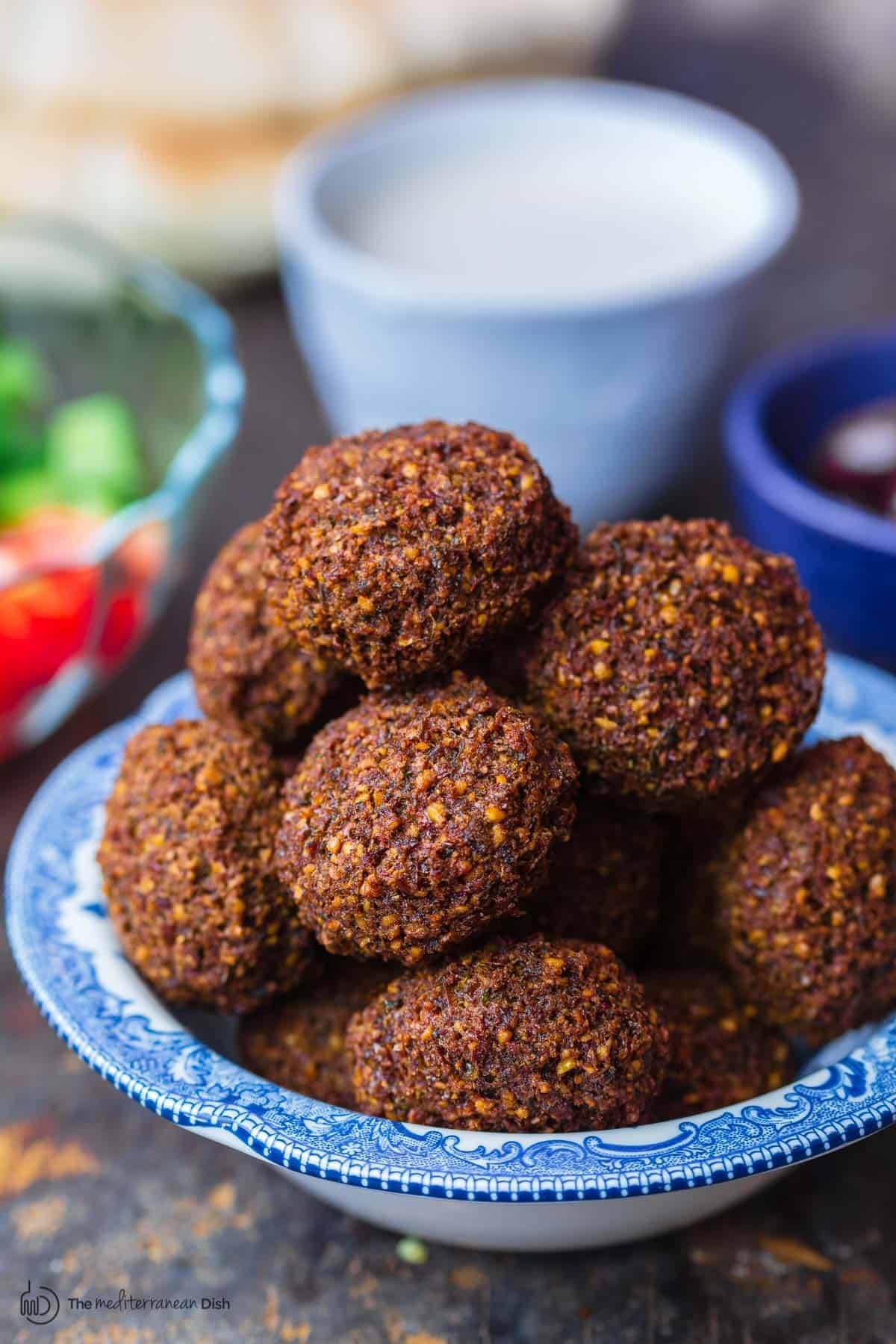Falafel is a beloved street food and a staple in Middle Eastern cuisine, enjoyed worldwide for its unique flavor and versatility. But What Type Of Food Is Falafel exactly? Let’s dive into its origins, ingredients, and culinary uses to understand better what makes falafel so special.
Defining Falafel: A Culinary Exploration
Falafel is essentially a deep-fried ball or patty made from ground chickpeas (or fava beans), herbs, and spices. This combination creates a flavorful and protein-rich dish that has been enjoyed for centuries. Falafel is considered a vegan dish, making it a popular choice for those seeking plant-based options.
Origins and Cultural Significance
The history of falafel is deeply rooted in the Middle East. It’s believed that falafel originated in Egypt, where Coptic Christians sought a satisfying meat substitute during long periods of fasting. From there, it spread throughout the Middle East, becoming a staple in various countries.
Today, falafel is a significant part of Middle Eastern culture, often sold by street vendors and served as a quick, affordable, and delicious meal. In Egypt, it’s known as “ta’amiya” and is commonly made with fava beans instead of chickpeas.
Key Ingredients and Preparation
The ingredients in falafel can vary slightly depending on the region and personal preferences, but the basic recipe typically includes:
- Dried Chickpeas: The foundation of falafel, providing protein and a distinctive texture. Using dried chickpeas (soaked overnight) is crucial for achieving the right consistency.
- Fresh Herbs: Parsley, cilantro, and sometimes dill are added for freshness and flavor.
- Onion and Garlic: These aromatics enhance the savory profile of falafel.
- Spices: Cumin, coriander, and cayenne pepper are commonly used to give falafel its characteristic warm and slightly spicy flavor.
- Baking Powder: This ingredient helps create a light and fluffy texture.
The preparation process involves grinding the soaked chickpeas with the herbs, onions, garlic, and spices in a food processor. The mixture is then formed into balls or patties and deep-fried until golden brown and crispy.
How to Serve Falafel
Falafel’s versatility makes it a popular choice for various meals and snacks. Here are some common ways to enjoy falafel:
- Falafel Sandwich: The most popular way to eat falafel is in a pita bread sandwich. The pita is filled with falafel balls or patties, along with toppings like tahini sauce, hummus, pickles, diced tomatoes, and cucumbers.
- Mezze Platter: Falafel is often included in a mezze platter, a selection of small dishes served as appetizers. It can be enjoyed with other Middle Eastern delicacies like hummus, baba ganoush, and tabouli.
- Side Dish: Falafel can also be served as a side dish alongside salads, roasted vegetables, or grilled meats.
Health Benefits and Nutritional Value
Falafel offers several health benefits due to its ingredients:
- Protein: Chickpeas are an excellent source of plant-based protein, making falafel a filling and nutritious meal.
- Fiber: Falafel is high in fiber, which aids digestion and promotes a feeling of fullness.
- Vitamins and Minerals: Chickpeas and fresh herbs provide essential vitamins and minerals, such as iron, folate, and vitamin C.
However, it’s important to note that falafel is typically deep-fried, which can increase its fat content. Baking or air-frying falafel can be healthier alternatives.
Conclusion
So, what type of food is falafel? It’s a versatile, flavorful, and culturally significant Middle Eastern dish made from ground chickpeas, herbs, and spices. Whether enjoyed in a pita sandwich, as part of a mezze platter, or as a side dish, falafel is a delicious and satisfying option for vegetarians and meat-eaters alike. Its rich history, simple ingredients, and diverse culinary applications make it a true culinary gem.
